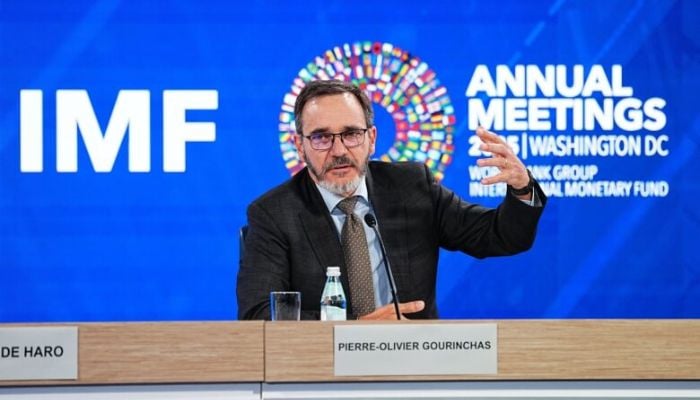How big is AI Bubble? IMF analysis reveals key insights
IMF sounds alarm on ‘AI Bubble,’ draws dot-com comparison
October 16, 2025

The International Monetary Fund (IMF) has identified “echoes” of the late-1990s dot-com bubble in the current “AI Bubble.”
The analysts unveiled that the artificial intelligence (AI) bubble mirrors the dot-come boom suggesting any future bust would be less likely to trigger a global financial crisis.
While assessing the white-hot AI sector, IMF’s chief economist, Pierre-Olivier Gourinchas stated that U.S. The AI investment boom replicates the pattern with the internet stock bubble that burst in the early 2000s.
This concern was raised in the IMF’s latest World Economic Outlook, released during the annual meetings with the World Bank in Washington.
As reported by Reuters, Gourinchas stated, “there are echoes in the current tech investment surge of the dot-com boom of the late 1990s. It was the internet then. It is AI now.”
The report cites the AI investment frenzy as a major factor that supports the U.S. and global economic development in the current year.
The tech giants (Meta, Amazon, Microsoft, and Alphabet) are spending hundreds of billions of dollars on AI chips, data centers, and computing power that are increasing stock market valuations and capital gains that have increased consumer spending.
A potential bust with limited contagion
While sharing similarities between the AI bubble and dot-com boom, the IMF also shared a striking distinction that may calm fears of a repeat of the 2008 financial crisis.
Gourinchas forecast that any bust of an AI bubble would be “less likely to be systemic event” capable of catering the U.S. or global economy.
The primary reason behind this is lack of leverage. Today’s AI investment is largely financed by the deep cash reserves of tech companies, not by debt.
“This is not financed by debt, and that means that if there is a market correction, some shareholders, some equity holders, may lose out,” Gourinchas put emphasis.
“But it doesn’t necessarily transmit to the broader financial system and create impairments in the banking system or in the financial system more broadly,” he added.
This marks a stark difference to the 2008 crisis, which was backed by excessive leverage in the housing market.
Lofty valuations, unrealized gains
IMF analysts note that the current scale of the AI boom is smaller. In light of IMF data, AI-related investment has increased by less than 0.4% of the U.S. GDP since 2022 as compared to the dot-come era, when investment grew by a much larger 1.2% of GDP between 1995 and 2000.
With this IMF projection, AI-driven investment and consumption is assisting in boosting demand and inflation pressures without the corresponding growth in productivity.
The fund has changed its inflation projections on the United States upwards and now projects it to fall only to 2.7% in 2025 and 2.4% in 2026, a target that the Federal Reserve has missed.
Although it did not foresee a crash, the IMF was warning of a crash triggered by an artificial intelligence correction that might overburden non-bank financial institutions.
At this point the message is however one of restraining caution and not panicking as the world awaits to discover whether the AI revolution is going to materialize its grandiose promise.


